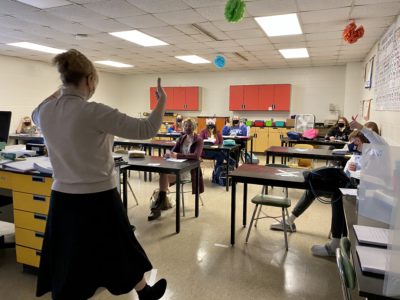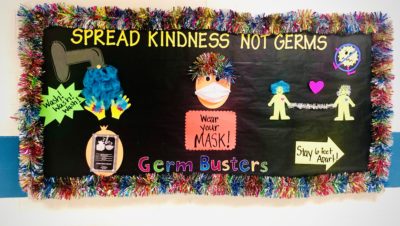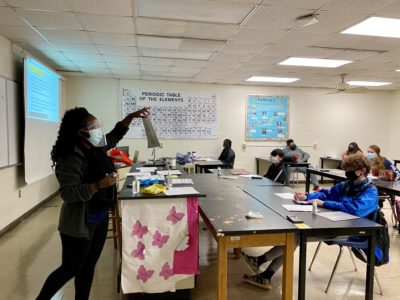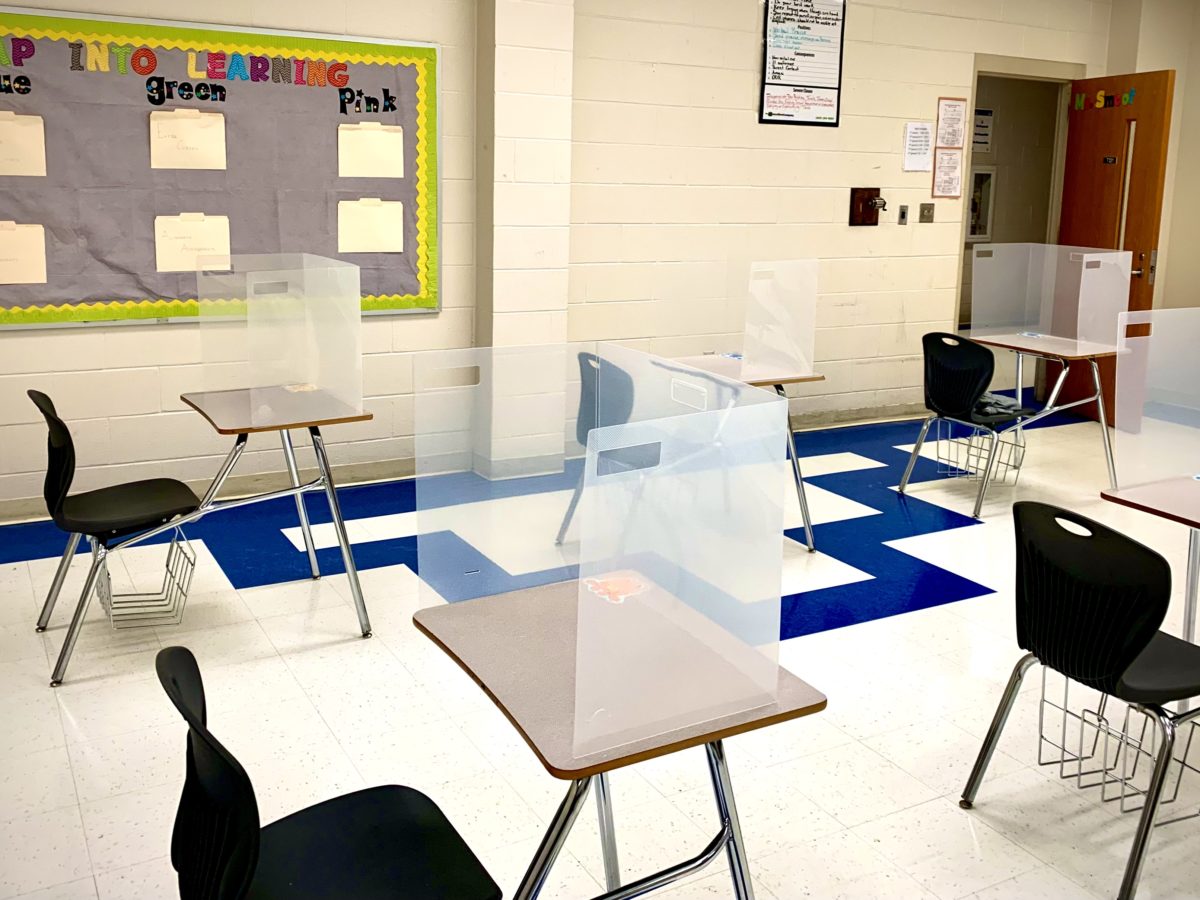
Practitioners Melissa Altemose and Lauren Lampron created a mini-series about school leadership during COVID. Last week, they expounded upon strategies for building trust during COVID-19. This week, they share resources around the power of intentionally fostering open communication during COVID-19. Follow them on Twitter and join the conversation by sharing your resources and tagging #NCcovED.
“The single biggest problem in communication is the illusion that it has taken place.”
George Bernard Shaw
The COVID-19 pandemic has propelled the educational community into a time of incredible uncertainty and has influenced the most drastic and rapid changes to a profession that has largely remained unchanged for years. Teachers, students, and school leaders are constantly learning new methods to do their jobs and just when they get the hang of a new routine, the system changes again (hello remote instruction, hybrid instruction, back to remote, A day/B day, asynchronous…).
There is no playbook for pandemic education, no past experiences or resources to pull from, and no experts to consult. COVID-19 calls for teachers to step out of their comfort zones and constantly juggle, adjust, experiment, and adapt their instruction. Staff are anxious to feel comfortable and confident in their work again but comfort and confidence are hard to come by with the perpetual changing nature of education during the pandemic.
In order to instill a sense of confidence in staff as plans rapidly change, stakeholders need to understand the full context of the situation and have the opportunity for their voices to be heard. Administrators should create spaces to over-communicate upcoming plans and changes; specific emphasis should be spent creating an environment where teachers are welcomed and encouraged to share feedback and identify negative consequences of implementation of changing plans. Teachers are willing to go to amazing lengths to innovate and problem solve to best serve their students, and it is our job as administrators to equip them with the knowledge and confidence to do so.
Here are four grab-and-go resources to help you communicate throughout COVID-19.
#1 Harness the power of informal communication
Establish ways for staff and student families to informally communicate with you.
Why: Provides an avenue to create dialogue by removing any formal barrier that may prevent individuals from communicating.
What it may look like: Create informal structures for parents and staff to get in touch with you for quick action items or questions. Receiving the message does not require immediate action; you can respond with “thank you for letting me know” or schedule a follow up time to meet. Being accessible is the most important aspect. Establish this structure by reminding your staff and parents to utilize informal communication with you:
- Google Chat: Business Messaging App for using G-chat during the work day with staff members. They can send a quick G-chat to obtain a more immediate response to a clarifying question.
- Share your cell phone number to encourage staff to text you.
- Use Remind101 as the app will allow you to send text announcements with list-servs of students and parents or individual texts to respective stakeholders — and the app logs all contacts in one place!
#2 Send weekly updates
Institute a practice of weekly reminders and updates sent to staff.
Why: Condensing all emails that a principal receives to share with staff for the week ensures that all information remains in one easy-to-find place and protects staff inboxes from overflowing.
What it may look like: Weekly, share a calendar of the week ahead and information that advances the school’s goals. Our practice is to send the weekly updates on Thursdays to allow staff time to review on Friday during the workday and take off the weekend from emails. Another practice is to share the weekly updates among other principals in your district to combine resources, etc.
- Smore includes a free version. What you will love about Smore is the ability to write your updates (or copy and paste the emails you would normally forward) all week long and then wait to publish it on the day you would like for it to be public. See photo of our Smore; you can see a link to the repeating COVID anonymous reporting tool referenced in last week’s article.
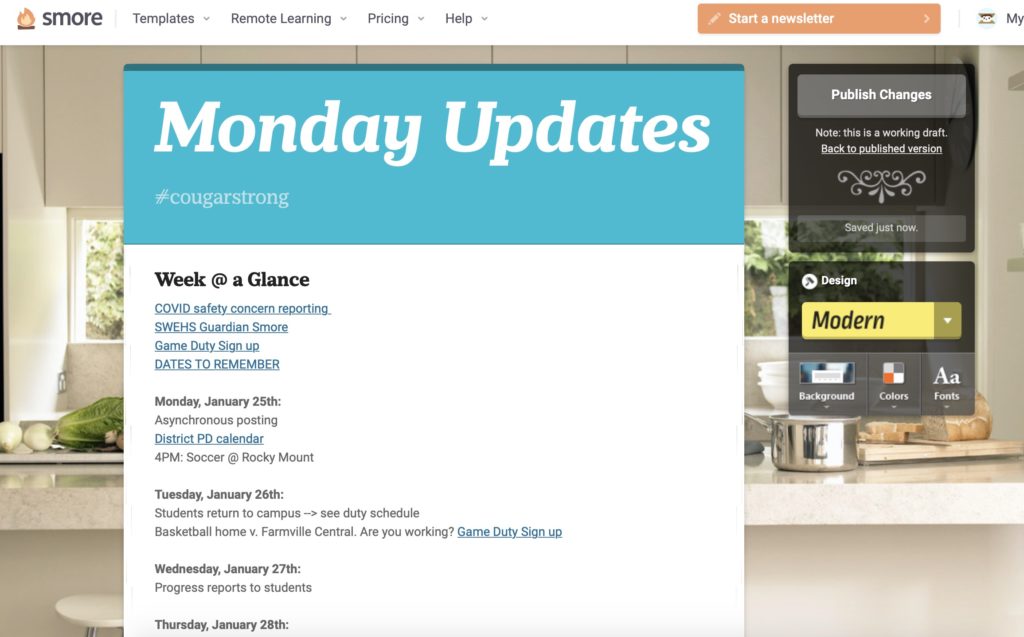
Institute a practice of weekly reminders and updates sent to student families.
Why: By including families on small, regular updates, they begin to see themselves as developers of the school’s culture.
What it may look like: Weekly email to parents to share news regarding hiring and vacancy updates, COVID-19 related items, FAQ, student game schedules, etc.
#3 Share where and when you are stuck
Invite staff to be critical friends by communicating what you are currently working on, what’s coming next, and where you are feeling stuck.
Why: Leadership is not about having the right answers; it is about fostering a community that creates the answers! Allowing your staff to solve problems and provide advice on next steps demonstrates your level of trust in their capacity.
What it looks like: Create a shared Google Doc where administrators can invite staff members to sign up to solve and create needed items. Recently, we asked our teachers to sign up to create the semester two schedule class times, generate online student norms, and plan the virtual orientation.
- Areas of needed assistance shared with editing rights for all staff members allows staff to sign up to take ownership to see tasks through from beginning to end.
- Note: As shared last week, public question and answer documents generate quick feedback and direction. Below, you’ll see a Q&A document that allowed teachers to record their questions on the left hand side of the public document during a recent staff meeting. After the meeting, the administration publicly responded to individual questions on the right column. Then, an area of assistance chart was created. Teachers signed up to lead activities/general products that our staff recognized as next steps during the meeting — or within the Q&A chart.
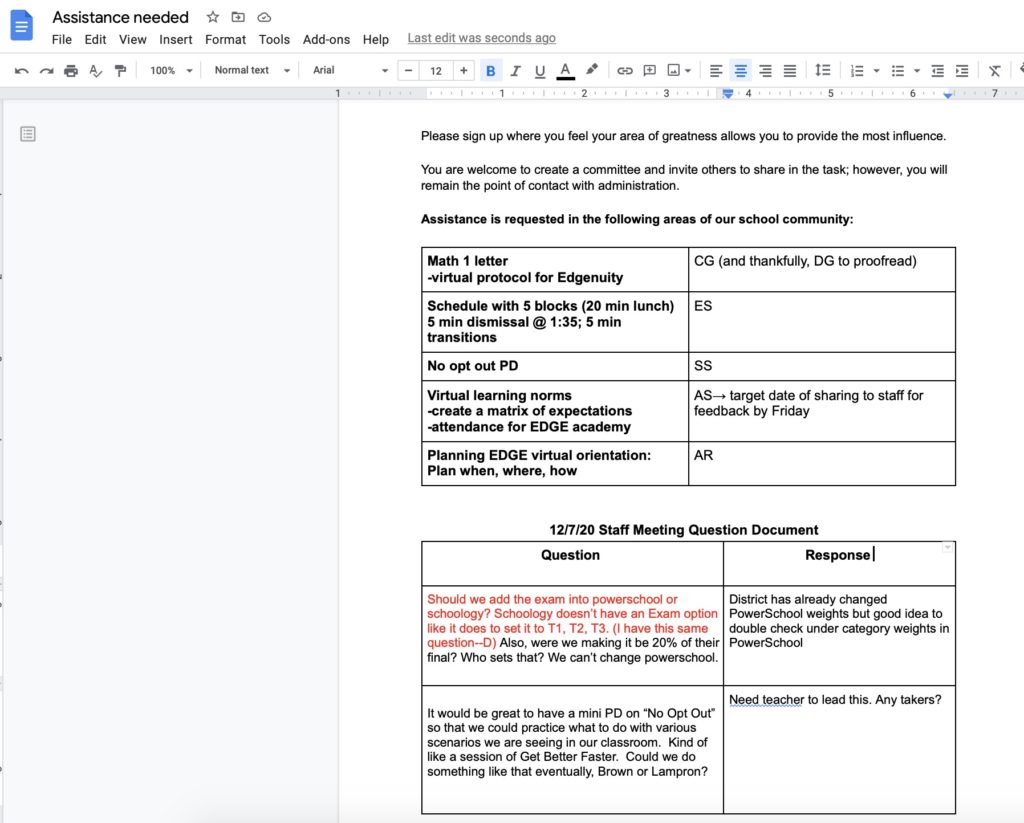
#4 Post on social media
Frequent social media updates should celebrate the great things happening in your school.
Why: Celebrating staff and students reestablishes a sense of normalcy for your school community and stakeholders. Social media provides a window into classrooms and sporting events where access is physically restricted due to COVID-19.
What it looks like: Build your own brand. Share your why — stakeholders need reminders of where we’re headed and why it’s important. Utilize the power of the team by sharing your school’s social media passwords with key stakeholders (content leads, athletic director, counselors, administrators, coaches, etc.). Provide guidance for how posts are best crafted and then ask them to play a part in posting exciting activities happening throughout the school in their respective areas. Survey your parents to see what platform they use.
Recommended reading
